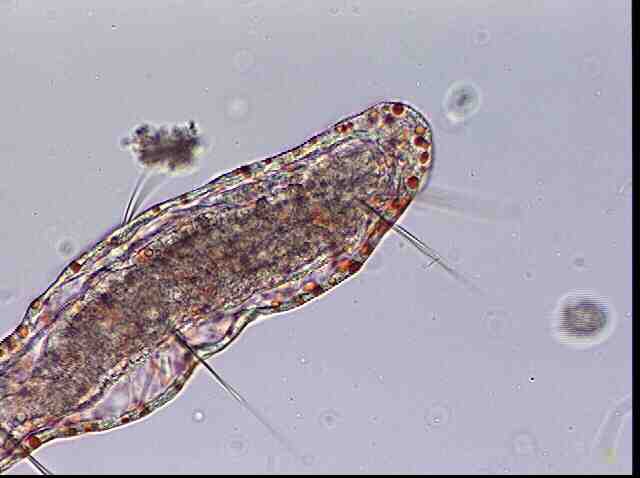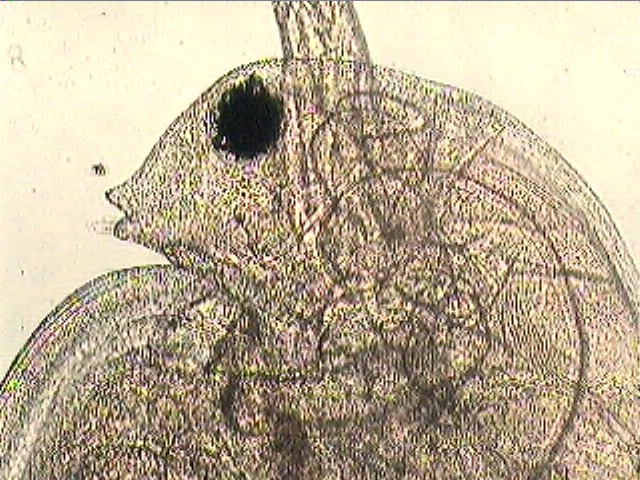Biological Products:
Bioaugmentation products for Wastewater applications in Papermills, Refineries, Chemical, Tanneries, Municipalities, Textiles, Steel, Agriculture, Animal feedlot, Gun Powder plant, Food and Beverage- Dairy Products, Orange Juice factory, Wineries, Cookie factory, Vegetable processing plant, Meat packing, Barbecue Restaurant, Aquaculture, Ornamental Ponds for algae control, CAFO, Nursing homes, Military, Campgrounds, Universities, Regulatory agencies
Lab Services:
Filamentous Identification Lab Service. One reason to identify filaments is to determine the filaments characteristics and then determine the type present. If the type is found out, a root cause can usually be associated with a particular filament. If the cause is known, then a correction can be made to alleviate problems. Chlorination is only a quick fix. Without process changes, filaments will grow back after chlorination. Wastewater Biomass Analyses and Cooling Tower Analyses also available
Training Materials:
Training is an integral part of any job. Not everyone is at the same level of training. Many people want beginning concepts and basics. Some need technical information or troubleshooting. Some want equipment, technology or process information. We have developed a full set of Basic training, Advanced training, Filamentous Identification the Easy Way as well as custom training CD's Manuals. We also provide hands-on training classes and soon will have an Online "E-University".
Audits and Consulting:
At Environmental Leverage® Inc., we have a team of experienced individuals who come into your plant with a fresh pair of eyes. The system is checked from influent to effluent. System optimization, equipment efficiency and operational excellence are key components explored. Key Benefits Equipment efficiency Total Cost of Operation reductions Reliability and safety An onsite audit is conducted to examine system parameters, process controls, and current monitor and control procedures. A physical walk-through is conducted, process flow diagrams are examined, previous design criteria are examined and current standard operating procedures are evaluated along with data logs.
|
Macroinvertebrates
What's New!
We now have a brand new "Higher Life Form videos" in our Training CD list. Check out our new Wastewater Training Materials. We are also in the process of developing new courses for our ""Online University" in order to meet the needs of our global customers that cannot travel to our public classes. WastewaterElearning.com/Elearning
We hope you like the new look of our Higher Life form Identification Pages If you would like more information on bacteria, filaments or higher life forms, you might want to consider purchasing our Wastewater Microbiology Training materials. We also have our lab that can perform a Wastewater Biomass lab analyses of your own MLSS for more information
macroinvertebrates
Identification There are many different critters that you will find sometimes in activated sludge or lagoons. Depending upon the age of the system- these also can be seen but are usually not very common or as critical as indicator organisms.
You may see Daphnia, Ostracod, Planaria, Copepods, Gastrotrich, Water Bears
Additional Information: Tardigrade -Water bears have well defined organs. More than 1000 species of tardigrades have been described. If stressed, water bears create cysts that can last for years until the right conditions return
Microcrustaceans-Copepods- Cyclopoida The copepods are the largest and most diversified group of crustaceans. Copepods can be found in many different shapes and sizes. There are over 14,000 species, 2,300 genera and 210 families. Important structural characteristics used to classify copepods are body shape, cylindrical segmented body, short articulated cylindrical segments, head, thorax, abdomen, antenna, antennule size, number of egg sacs, compound somite, thoracic and abdominal segments, ovary, pouch, limbs, number of segments and protective covering. etc. They have many moving parts. They are oar-footed, referring to the pair of swimming legs, Like protozoa and metazoa these microorganisms are strict aerobes and are more sensitive to toxic conditions than bacteria. Copepods are usually found only in a very stable activated-sludge environment or a lagoon system.
They have a moderately long secondary antennae, and the females carry twin egg-sacs. They are typically 1-2 mm long. Although the usual length of adults is 1-2 mm, adults of some species may be as short as 0.2mm and others may be as long as 10mm. A common feature that unites all the copepod orders is a single simple eye in the middle of the head, at least in the larval stage. The cephalosome is a shield over the head and some thoracic segments distinguishes the free living forms.
Environment These organisms are found in many different types of wastewater. Most are often observed in higher MCRT systems or where the sludge is older. They thrive in aerobic wastewater treatment processes when the D.O. concentrations are high and bacterial food is low. They are present in large numbers in secondary wastewater effluent, trickling bio-filters or rotating biological contactors (RBC's) where an older biofilm develops.
They are usually the last to come ( as far as age) and the first to go( as far as increases in toxicity or BOD loading) from an "indicator organism" standpoint. They can indicate a system with a very old sludge age, high MLSS, low F/M ratio or high MCRT. Some plants use worms and water bears as an indicator to when to increase wasting since it means their sludge is getting older.
How to find them: Microscopic examination of a wet mount. Some of the larger organisms can be seen at 10-40x and 100x. Daphnia can turn a clarifier pink.
It depends upon what the rest of the biomass looks like. Typically the
presence of macroinvertebrates indicates an older sludge age with low
loading of food vs. the amount of biomass available to stabilize the
organics. It can mean solids build up in the clarifier centerwell or algae
build up around weirs. Check for soilds build-up and increase maintenance. It may mean the sludge is older if the floc is golden to dark brown, firm and compact. If you push the sludge age too old, though beware, the floc will start to break apart and water quality will deteriorate. Ashing on the clarifier is a sign that the sludge is getting older or running out of air. Another symptom will be very dark brown to black centers in the floc structure.
If you have once through lagoons, you may find many worms, as well as many different types in the same sample. Lagoons differ from activated sludge and the types of higher life forms may vary depending upon the holding time of the lagoon and if a very large lagoon, different sections will have different stages of higher life forms.
Daily microscopic analyses is helpful in documenting where you are today, where you have changed since the previous day and how to react to changes proactively as opposed to when they have become critical!
What should I do if there is a
significant change in my higher life forms and all of a sudden there is an
increase in macroinvertebrates?
You might want to significantly increase your wasting levels if there are
dominant.
One good thing, Daphnia and copepods are used as a measure of toxicity in a plant. If you actually have live ones living in your system, you know you should pass most or all Acute or chronic toxicity tests.
More to come soon! For more information on Higher Life Form Identification More photos to come. . .
If you need more information on our Filamentous Identification the Easy Way Training CD or on Internet training on Filamentous bacteria, causes and controls. How and why on Wastewater Biomass Analyses
|

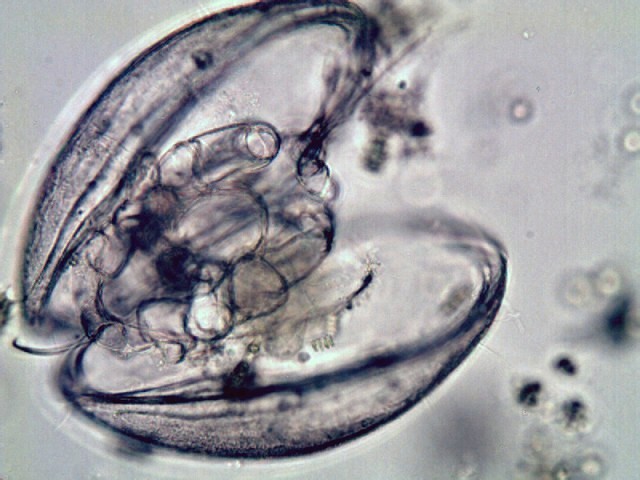 When
trying to determine species, stick to the basics, and focus on the causes
and controls of the higher life forms present. The main point of any
wastewater biomass identification is not
to get a PhD, but to fix your plant!
When
trying to determine species, stick to the basics, and focus on the causes
and controls of the higher life forms present. The main point of any
wastewater biomass identification is not
to get a PhD, but to fix your plant!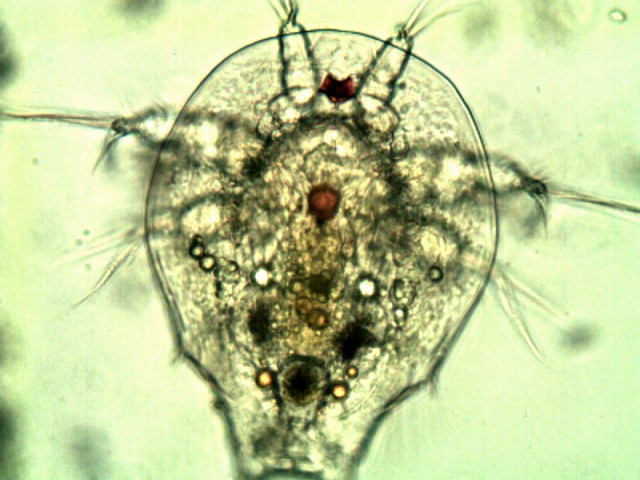
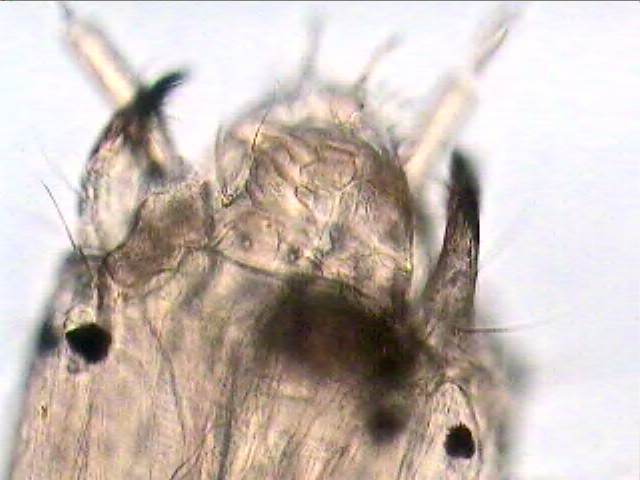 What
does it mean when I see an increase in macroinvertebrates in my system?
What
does it mean when I see an increase in macroinvertebrates in my system? 
